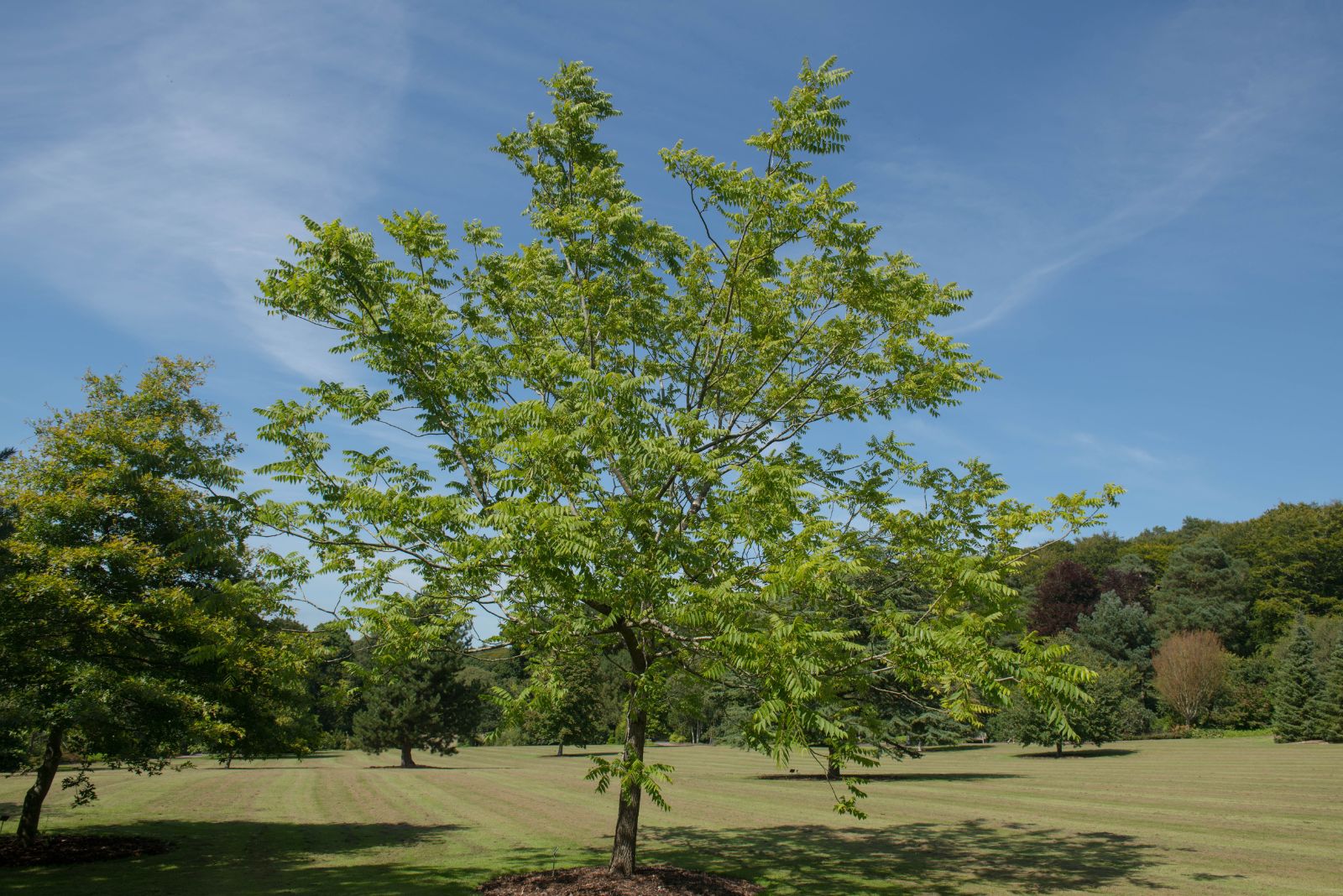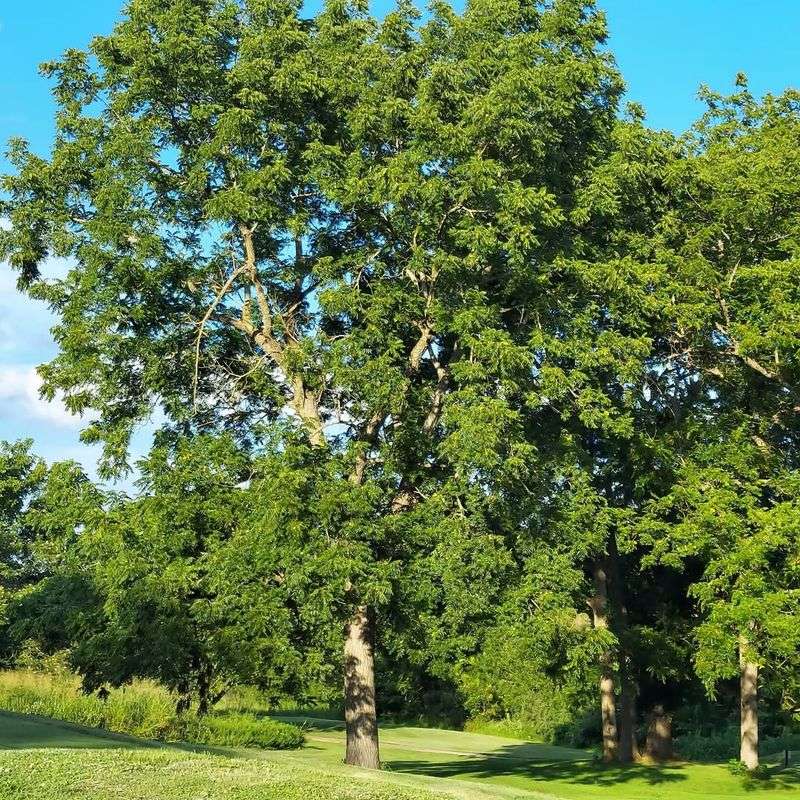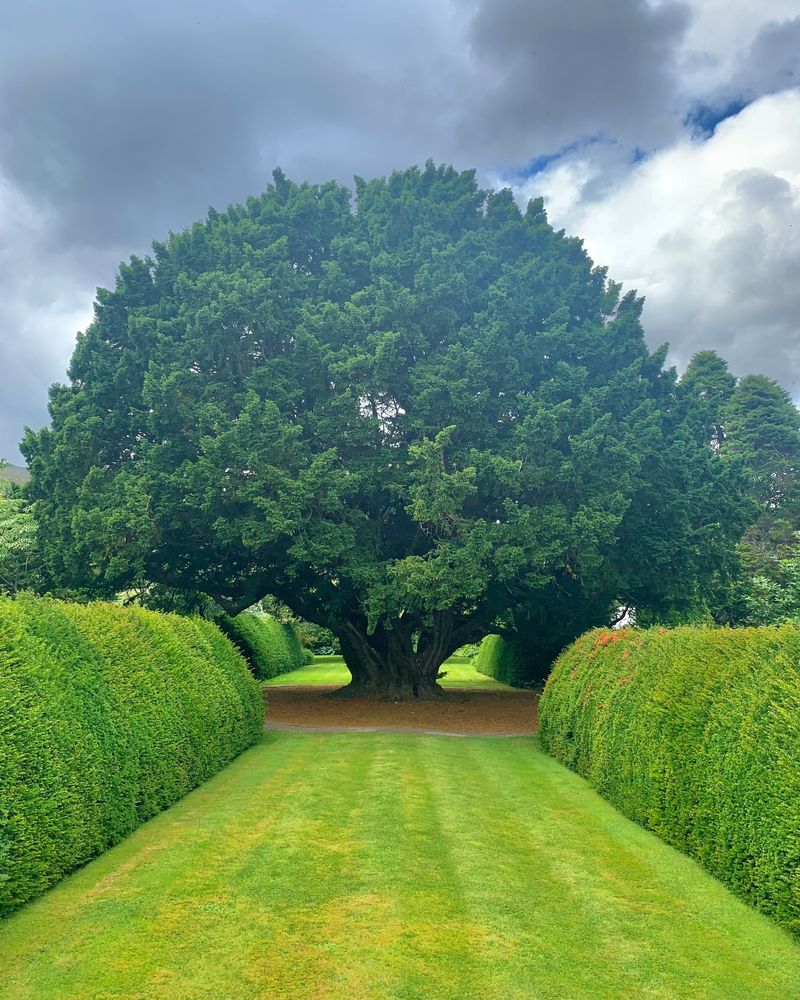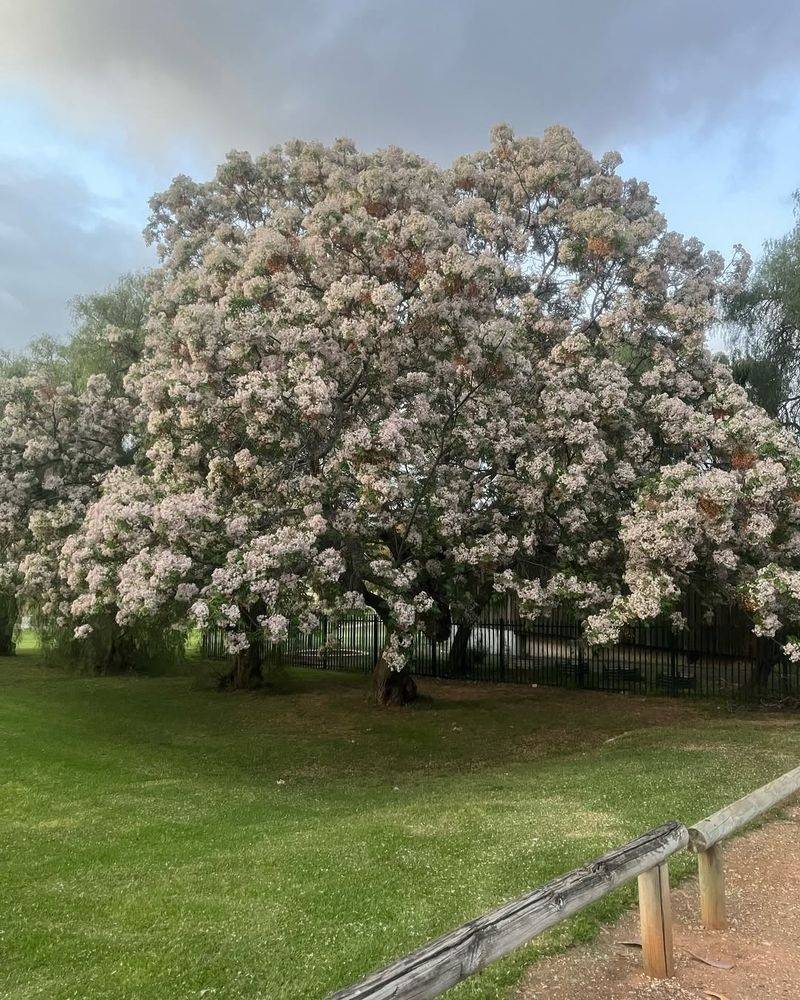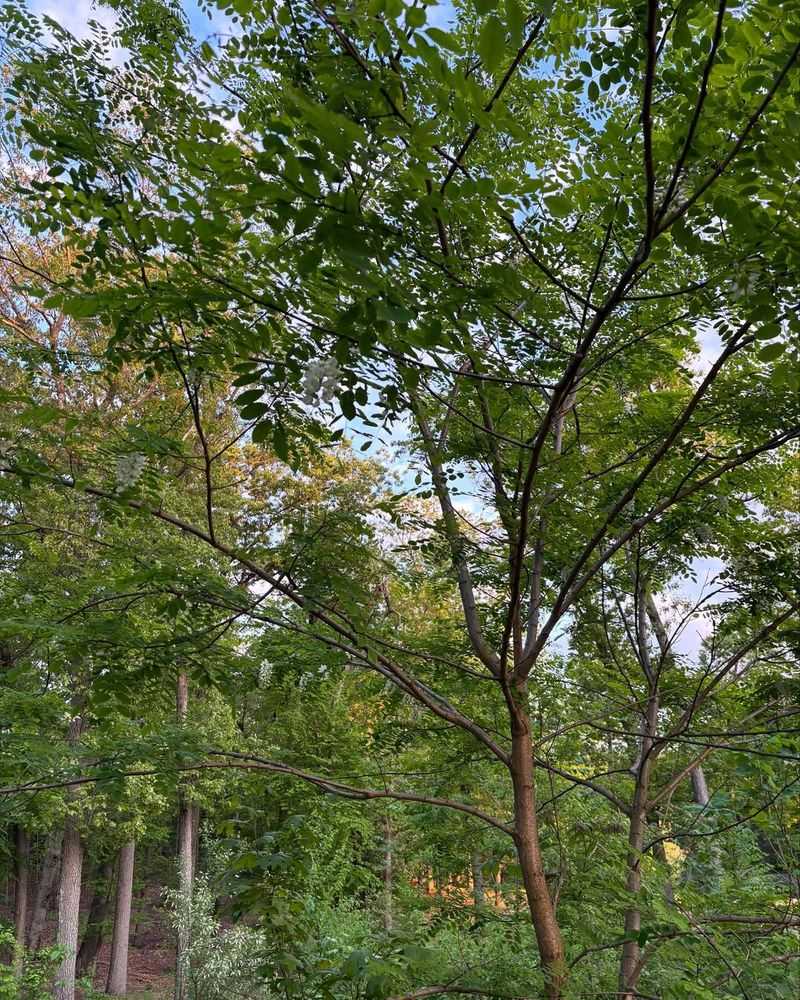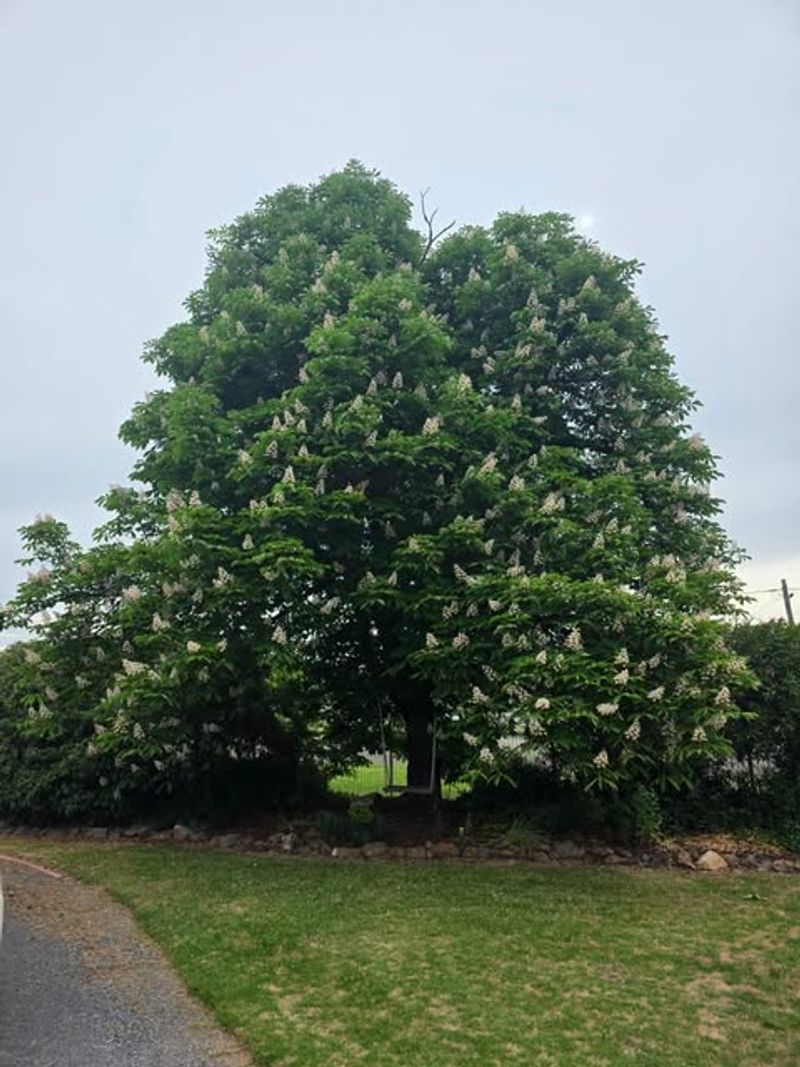Some trees look harmless from a distance, but a few can bring more headaches than shade to Virginia yards. Their roots spread like troublemakers underground, their leaves or bark can cause harm, and their habits may turn a calm lawn into a battleground.
Homeowners often plant them for quick growth or pretty foliage, only to learn that beauty can come with a price. When the wrong tree takes hold, it can stir up issues that linger for years. If you pick the right trees from the start, you spare yourself headaches and unnecessary expense.
1. Black Walnut
Black walnut trees might seem harmless, but they release a chemical called juglone that poisons many nearby plants. Tomatoes, azaleas, and rhododendrons simply cannot survive near these trees.
Horses face even greater danger if they eat the bark or nuts, developing a serious condition called laminitis. The husks can stain your hands and clothes badly too.
If you already have one, keep horses away and plan your garden carefully around it.
2. Yew Trees
Every part of a yew tree except the fleshy red berry covering contains toxins. Children might find those bright berries tempting, but eating the seed inside can cause serious heart problems within hours.
Even touching the needles and then rubbing your eyes can cause irritation. Pets who nibble on yew branches face life-threatening consequences.
Many Virginia landscapers avoid planting yews in yards where kids and animals play regularly.
3. Chinaberry Tree
Chinaberry trees produce marble-sized yellow berries that look innocent but pack a dangerous punch. Just a handful of these berries can make a child or pet extremely sick, causing vomiting, seizures, and breathing problems.
Birds sometimes spread the seeds, making these invasive trees pop up uninvited. The wood itself releases toxins when burned, creating harmful smoke.
Removing chinaberries from your property in Virginia protects everyone while preventing unwanted spreading.
4. Black Locust
Beautiful white flowers make black locust trees popular, but their bark, leaves, and seeds contain harmful toxins. Kids who chew on twigs or seed pods can experience nausea, weakness, and irregular heartbeat.
Livestock grazing near fallen branches have died from eating the leaves. The sharp thorns on young trees add another layer of danger for anyone walking nearby.
Consider safer flowering alternatives if you have young children or animals roaming your yard.
5. Kentucky Coffeetree
Despite its interesting name, the Kentucky coffeetree produces toxic seed pods that can poison anyone who eats them raw. Early settlers roasted the seeds as a coffee substitute, but unroasted seeds cause severe stomach upset and neurological symptoms.
The large pods drop throughout fall and winter, creating cleanup challenges. Children might mistake them for interesting playthings.
If you already have one, regularly clear fallen pods before curious kids or pets investigate them.
6. Horse Chestnut
Shiny brown chestnuts enclosed in spiky green capsules might look like fun treasures in Virginia, but they contain poisonous compounds. Eating these nuts causes severe digestive distress, confusion, and muscle twitching in both humans and animals.
Kids often collect the attractive nuts without realizing the danger. The leaves and bark also contain toxins, though in smaller amounts.
Teaching children never to eat wild nuts helps prevent accidental poisoning from these common ornamental trees.
7. Red Maple
Red maples add gorgeous fall color but pose risks to horses and other livestock. Wilted or dried leaves contain toxins that destroy red blood cells, causing weakness, dark urine, and often death within days.
Fresh green leaves rarely cause problems, but fallen leaves after storms become dangerous. Even small amounts can prove fatal to horses.
Virginia homeowners with horses nearby should fence off red maples or remove them entirely for safety.

